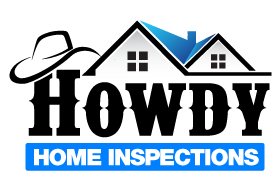Hi y’all,
I’m always asked if folks should have a Radon test done on a house that they’re getting ready to buy. I always say unequivocally, 100% YES!!!! Most people have no idea how dangerous Radon gas really is. It’s the second leading cause of lung cancer in the United States and claims the lives of over 20,000 people per year. Radon gas is a carcinogen that’s odorless and tasteless and can occur almost anywhere. This means your house could be filled with it and the water you drink could be contaminated by it and you would never know. Radon is a killer and my job as a home inspector is to protect people from this danger. You can visit my website for more information on Radon Gas.
So what is Radon Gas, how does it get in my house and how does it cause cancer?
I’m a chemistry geek. My favorite classes in college were organic and inorganic chemistry. I think this is why I’m so fascinated with Radon, how and why it occurs and where it can be found. Radon is one of the Noble gasses and can be found on the far right column, second to the bottom on the periodic table.
Elemental radon occurs as the intermediate step in the decay of the element Uranium. Uranium is one of the most common radioactive elements on earth. It’s naturally found in rock, soil and water. So, if your house is located on top of rock or soil that contains uranium, chances are you’re being exposed to Uranium’s decay product, Radon. Since Radon is a gas, it easily moves up through the ground, through the cracks, holes and expansion joints of your house and then diffuses and contaminates the air you breath in your home. It can even enter your home through your water system and become airborne once it exits the supply lines. The EPA states that nearly 1 out of every 15 homes have an elevated level of radon, which they define as 4.0 pico Curies per liter (pCi/L).
Why is Radon bad for us and how does it cause cancer?
Radon has a very short half-life, meaning it decays rapidly. The alpha particle products of this decay are radioactive. When radon is present in our house, we unknowingly inhale these radioactive particles where they are able to stick to the epithelial lining of our bronchial tubes. This creates an almost perfect scenario for cancer to occur. The lining of our bronchial tubes contain cells that are some of the most sensitive to radiation-induced cancer. The other part of this scenario is that alpha particles are several hundred times more likely to cause cancer than other types of radioactive particles. When you combine both of these scenarios, you can see why radon is so dangerous and why it is the second leading cause of lung cancer.
I’m one of only four inspectors in the Charlotte area that are IAC2 certified for Radon. You can verify this information at the IAC2 certified member’s site. In a future blog post I will talk about how proper radon mitigation is done and I may even delve deeper into the different types of Radon tests available and how they’re different from each other. One thing I want to say before ending this post is radon levels can change over time. I think it’s extremely important to have your house tested if you have any concern of what the levels might be. You can call me or any other qualified inspector to do the test. All I care about is that if you have concerns you have your home tested. Feel free to call me anytime if you have questions about Radon.
Be Happy and Be Kind,
T.J. Thorne


